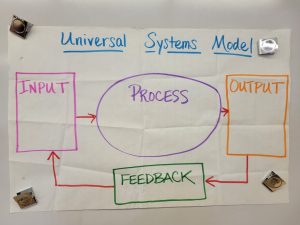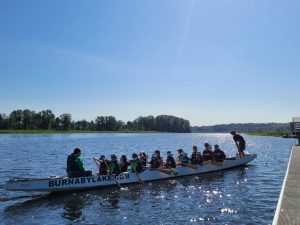Hello Everyone,
Today, I would like to talk about assessment and the LIFE RUBRIC activity we did in class.
Some thoughts about assessment, as I shared in email to you all:
- The goal is to get proficient; extending is reserved for going beyond criteria and grade-level expectations in specific ways.
- To get a developing on anything does not mean a person is having trouble or needs any serious intervention at this time unless I contact you (because I would if it was needed). It means they are still developing and need special encouragement in that area.
- Please review project rubrics you receive, then sign and return immediately to school. I track who has brought them in so I can be sure you have seen them. In this way we avoid surprises on the report card, and everyone gets communication about progress.
- Projects involve more than one subject. As appropriate, depending on curricular competencies, I divide up the marks for a project between subjects, noted at the top of the rubric. For example, the Nutrition Poster involves language arts presentation and research documentation skills, socials research competencies, and science/health content from nutrition information.
- All e-port marks contribute to language arts evaluation, as well as unit content in socials, science, and math.
- You will note sometimes I indicate a mark with a slash. This means your child is between areas. I always note the stronger area of the proficiency scale first. For example, if I say PRF/EXT, it means the student was stronger on the proficient side, but they had some elements of extending.
- For report cards I can only assign one proficiency scale mark per subject, so I gather information from all daily assignments, projects, and e-ports to make that decision. It is not an average of proficiency scale marks but based on the picture of child’s progress to date at the end of the term. I encourage you to read my feedback, report card comments, and student goals on the report, rather than just the marks, to get a better picture.
- Please see your child’s e-ports and make comments if you have time. At the end of the term, I will be giving you a questionnaire to fill out about how you think your child is doing, so I can take your input into mind.
- Binders have daily work that has been passed back with checks. Some students are also missing work. While I don’t have time to go through and chase every single learning assignment down, any student is welcome to ask me in class if they are missing something. Students will be asked to reflect at the end of term one how they have been doing on turning in assignments, as their input is also required for the report card.
- A reminder that everyone responds better to hearing strengths first, and then 1-2 areas of feedback for next time. It is overwhelming to hear too much. This is especially true for advanced learners who frequently struggle with perfectionism and unrealistic expectations about performance. We can accidentally encourage their tendency to catastrophize about the importance of one mark by talking about an assignment or project for too long when it comes home. Everyone will have many more opportunities to practice and learn things they are still working on. One project is just one step in the journey.
Today, we reviewed the words associated with the proficiency rubric to ensure we all understand them.
I often say that the proficiency rubric is easier to understand, with its words of emerging/developing/applying (proficient)/extending if you create a LIFE RUBRIC.
Think of one thing that you do daily. We assigned the four parts to the four corners of our classroom. Then, Ms. D said an activity and students moved to the part of the rubric they thought they were in.
For example, where are you on “cleaning your room?”
EXTENDING — I can clean my room independently and use sophisticated skills, some of which I learned on my own time, such as feng shui arrangements, Marie Kondo folding, organizing boxes I created myself, to clean it. No one needs to tell me to clean my room. I could teach someone else how to clean a room, and I probably remind other people to “get to it!” I even developed my own personal schedule for cleaning and posted it on the fridge.
PROFICIENT — I can clean my room independently and use a complete set of skills I have been taught to organize it — for example, vacuuming, making my bed, and picking up materials to put into organizing buckets I have been given. No one needs to check in on me as I am cleaning my room. I feel confident doing it myself.
DEVELOPING — I can clean my room myself with some guidance. For example, someone might need to check in on me and say, stop reading and get to cleaning! Or, maybe I need help getting the vacuum out and turning it on. Maybe I need some advice on how to fold corners on the sheets. But, I have a partial understanding of what to do and can do some of it myself.
EMERGING — I either have never cleaned my room before, or I can clean my room with a lot of guidance, as I am beginning to learn how to do it. I might need assistance deciding when the room is dirty, staying on task and not making new messes while cleaning it up, or not shoving dirty laundry under the bed and instead putting it in the hamper. My parents are showing me how the vacuum works, as I haven’t done that before. My parents came in and modelled for me how to clean, talking about the steps as they helped me, so I can learn how to do it next time on my own.
**Try this at home as a discussion. Try something like — making your own lunch, making dinner for the family, riding a bicycle, coming up with a family activity, or playing with a sibling. It works best if BOTH parent and child identify some things they do on the LIFE RUBRIC, so everyone can see they aren’t alone in developing skills. We are all doing it, and it is a lifelong process.






